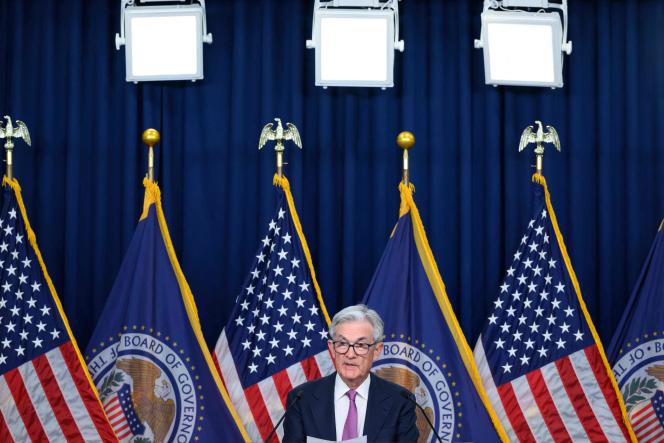After having increased its key rates during ten consecutive meetings, the American Federal Reserve (Fed, central bank), decided on Wednesday, June 14, to leave its rates unchanged, within a range of between 5% and 5.25%. This pause was widely expected by the financial markets. However, the Washington institution refrained from declaring “mission accomplished” in its fight against inflation.
In May, it certainly fell to 4% over one year, whereas in July 2022 it had reached a record 9.1%. However, excluding energy and food, this annual rate remains at 5.3%, a level far too high for the Fed, which is aiming for an annual rate of 2%. As a result, its members estimate that, by the end of 2023, the bank will again raise its rates twice, to reach the range 5.5%-5-75%. Ultimately, this is more of a temporary ceasefire than a victory against the general rise in prices.
The meaning of these announcements has been much debated. Some see it as a way to appease the financial markets, which do not believe the Fed and its chairman Jerome Powell. They are confident that it will be forced to cut rates much faster than expected, due to the economic downturn. They have already anticipated this monetary “pivot” and a drop in rates.
Since hitting lows in October 2022, the S&P 500 index, which represents large companies, has gained 25%, while the tech-heavy Nasdaq has jumped 35%. To confirm that the rise was over would have been to further lower long-term rates (those at ten years are 3.8% against 4.25% in October 2022) and to fuel the surge on Wall Street, in other words to boost the economy instead of slowing it down.
A very resilient job market
The other thesis is that said economy is indeed still much too dynamic and that the Fed, anxious not to repeat the errors of the 1970s when it declared victory too quickly in its fight against inflation, really wants to slow down the engine. In the winter of 2022, there was a first serious incident with the bankruptcy of regional banks, but this event, while it weighs on credit conditions, has not had a major systemic effect, contrary to fears expressed.
Thus, the Fed now expects growth of 1% in 2023, compared to 0.4% in its March forecast. It expects a very resilient job market, with unemployment limited to 4.1% (compared to 4.5% forecast in March) and inflation excluding energy and food of 3.9% (compared to 3.6% in March).
You have 26.07% of this article left to read. The following is for subscribers only.
